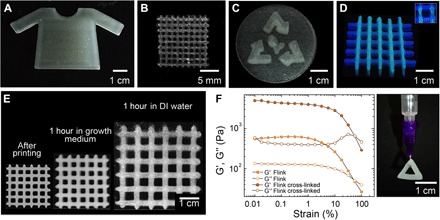Fig. 3. 3D printing accuracy, swelling, and mechanical properties after cross-linking and bacterial growth using a 4.5 wt % Flink and Flink-GMHA.

(A to C) Various shapes of Flink hydrogels containing localized bacteria with high precision in 3D. (D) Multimaterial 3D printing with spatial segregation of two bacterial strains. P. putida is labeled with DAPI (blue) and localized in the horizontal lines, whereas B. subtilis is colored with Nile Red (green) and embedded in the vertical lines. (E) Flink (6 wt %; without bacteria) was modified with GMHA to form a UV–cross-linked water-insoluble hydrogel after UV light exposure (365 nm for 60 s at 90 mW). The hydrogels are shown after printing, after 1 hour in bacterial medium and after 1hour in DI water, respectively. (F) Amplitude oscillatory sweeps of the modified Flink-GMHA (4.5 wt %) before and after cross-linking. Strains in the range from 0.01 to 100% at an angular frequency of 1 rads−1 were applied in these measurements. All scaffolds are self-sustaining and resilient.
